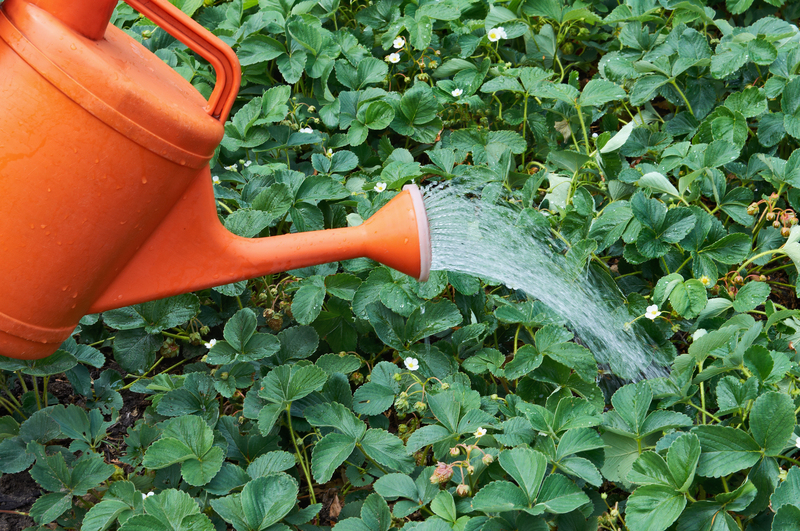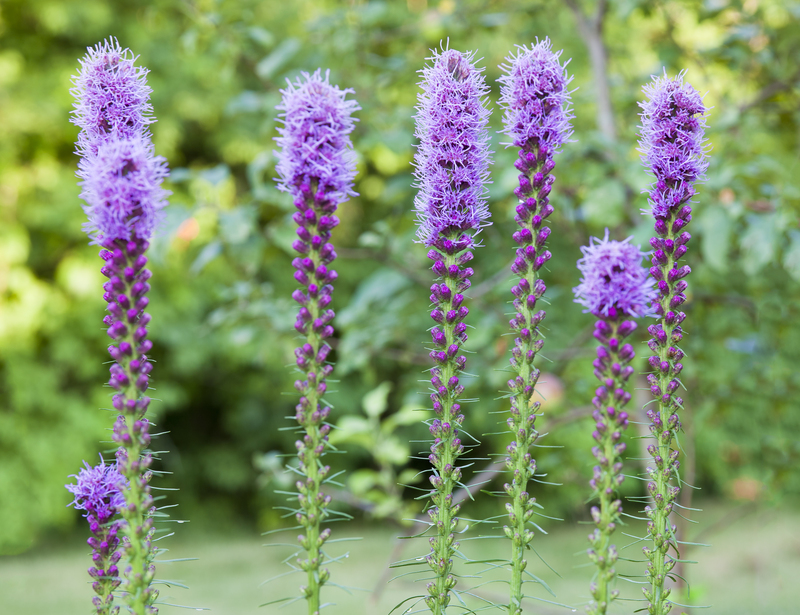Anchor Your Orchid's Future with Care
Posted on 22/08/2025
Anchor Your Orchid's Future with Care: The Ultimate Guide
Orchids, with their enigmatic beauty and captivating blooms, have long fascinated plant lovers across the globe. Yet, despite their popularity, many find them notoriously challenging to nurture. The secret, however, lies in understanding their unique requirements and giving them consistent, dedicated care. This article, optimized for readers and search engines, unveils proven strategies to secure your orchid's future through expert orchid care. Whether you're a new orchid enthusiast or a seasoned grower, this comprehensive guide will help you anchor your orchid's future with care for vibrant blooms and robust health year after year.

Understanding Orchids: More Than Just a Pretty Flower
Before diving into the essential steps to anchor the future health of your orchid, it's vital to grasp what makes orchids distinct from other houseplants. With over 25,000 species and more than 100,000 hybrids, orchids offer a diversity unmatched in the plant world. While their beauty is undeniable, so is their need for proper care and attention.
- Epiphytic nature: Most popular varieties like Phalaenopsis, Dendrobium, and Cattleya are epiphytes--meaning they grow on trees in their natural habitat.
- Sensitive roots: Orchid roots require both moisture and good aeration to avoid rot.
- Unique blooming cycle: Many orchids bloom only once or twice a year, with long intervals between flower spikes.
Why Anchor Your Orchid's Future?
Anchoring your orchid's future with care isn't just about producing dazzling flowers--it's also about giving your plant the right environment, support, and protection to thrive for years. A well-anchored orchid:
- Resists disease and pest infestations.
- Maintains strong root systems and healthy foliage.
- Rewards you with reliable, stunning blooms.
Setting the Foundation: Potting and Repotting Orchids
Choosing the Perfect Medium
Unlike typical houseplants, orchids don't grow well in soil. Instead, use specialized orchid potting mixtures that typically include:
- Pine bark or fir bark
- Sphagnum moss
- Perlite
- Charcoal
- Coconut husk chips
Repotting your orchid every 1-2 years is crucial to prevent root rot and ensure continued health. Anchor your orchid's future by always:
- Using clean pots: Disinfect pots before reuse to avoid disease.
- Trimming dead roots: Remove any mushy, brown, or rotten roots with sterile scissors.
- Choosing the right size: Orchids prefer snug pots that encourage healthy root growth.
Potting Tips to Ensure Stability
One of the fundamental aspects of anchoring an orchid's future lies in making sure it's stable in its pot. Orchids that wobble or topple over can suffer root damage and stunted growth.
- Center your orchid: Gently place your orchid in the middle of the pot, spreading roots evenly.
- Secure with stakes: Use bamboo stakes or clips to support tall flower spikes or unstable plants.
- Pack the medium gently: Tuck bark or moss firmly around the roots to secure the orchid, but don't pack it so tightly as to restrict airflow.
Orchid Care Essentials: Watering, Light, and Humidity
1. Watering: The Goldilocks Principle
To anchor your orchid's health, never underestimate the importance of correct watering. Most orchids prefer to dry out slightly between waterings. Here's how to get it right:
- Frequency: Water once a week in summer, every 10-14 days in winter.
- Method: Use tepid water and soak the pot thoroughly. Let excess water drain away.
- Avoid leaf crowns: Don't let water sit in the central leaves; it can cause rot.
Pro tip: Stick your finger in the medium--if it feels dry an inch down, it's time to water.
2. Lighting: The Key to Blooms
Orchids thrive in bright, indirect light. Too little, and your plant won't flower; too much, and you risk scorch marks.
- Ideal locations: East or west-facing windows are perfect.
- Filter harsh rays: Use sheer curtains or blinds if sunlight is intense.
- Supplement in winter: Consider fluorescent grow lights during darker months.
3. Humidity and Airflow: Orchid Wellness Factors
Most orchids flourish with humidity levels between 40-70%. Dry air leads to shriveled roots and limp leaves.
- Use gravel trays: Place your orchid pot above a water-filled tray with pebbles.
- Mist regularly: Mist the air around your orchids, not the plant directly, to increase humidity.
- Maintain good air circulation: Use a small fan to promote airflow and prevent fungal diseases.
Feeding for the Future: Orchid Nutrition
Nourishing your orchid ensures robust roots, lush leaves, and reliable flowers. Here's how to anchor its future with fertilization:
- Use a balanced fertilizer: Look for products labeled "20-20-20" or "orchid formula."
- Feed weakly, weekly: Dilute fertilizer to half-strength every other watering during the active growing season.
- Flush the medium: Rinse the pot with plain water once a month to remove salt buildup.
Remember: Overfeeding can do more harm than good. Err on the side of under-fertilizing for a safer approach!
Proactive Orchid Care: Pruning, Cleaning, and Health
Regular Pruning for Lasting Beauty
Prune faded flower spikes and dying leaves to direct your orchid's energy toward new growth. Always use sterile scissors to prevent disease transmission. This small step will help anchor your orchid's future for continuous cycles of growth.
Cleaning and Pest Prevention
- Wipe leaves: Gently wipe leaves with a damp cloth every few weeks to remove dust.
- Check for pests: Inspect your orchid for mealybugs, scale, and spider mites. Treat infestations promptly with insecticidal soap or neem oil.
- Disinfect tools: Always sterilize cutting tools between uses to prevent disease spread.
Orchid Troubleshooting: Overcoming Common Challenges
Wilting or Dropping Leaves
This could signal overwatering or root rot. Remove the plant from its pot, trim decayed roots, and repot in fresh medium.
No Blooms?
- Insufficient light: Increase exposure gradually without direct midday sun.
- Temperature swings: A slight temperature drop at night can trigger blooms, especially in Phalaenopsis orchids.
- Lack of feeding: Make sure you're fertilizing regularly during the growing season.
Root Problems
If you notice black, mushy, or foul-smelling roots, your orchid's future is at risk! Examine the root system and cut away any unhealthy portions with sterilized scissors.
From Bloom to Dormancy: Understanding the Orchid Cycle
Orchids naturally undergo periods of activity and dormancy. Anchoring your orchid's future means adapting your care to these stages:
- Growth phase: Water and feed regularly, provide strong light and humidity.
- Flowering phase: Support heavy spikes with stakes, mist for humidity, and avoid moving the plant excessively.
- Dormant phase: Reduce watering and stop fertilizing. Don't panic if your orchid loses leaves--this is normal for certain types like Dendrobium.
Repotting: When and How to Anchor Your Orchid's Support
Repotting not only refreshes the growing medium but gives you a chance to inspect the health of your orchid. Here's a step-by-step guide:
- Remove the orchid: Gently take the orchid out, being extra careful with the roots.
- Clean and inspect: Trim away any dead or rotten roots.
- Add fresh medium: Fill the bottom of the new pot with orchid bark or your preferred mix.
- Anchor the orchid: Position your orchid's base just above the medium line and fill in around the roots. Stake as necessary.
- Resume care: Avoid watering for 2-3 days to allow any root wounds to heal.

Advanced Tips: Ensure a Bright Orchid Future
1. Temperature Control
Most orchids thrive with day temperatures between 18-29?C (65-85?F) and night temperatures at least 10?F cooler--for many, this day/night differential is the key to initiating blooms.
2. Rotating Your Orchids
Every week, turn your orchid a quarter-turn to ensure even light distribution. This small habit anchors uniform growth and lush foliage.
3. Watch for Keikis and Offshoots
Some orchids produce small baby plants on old flower spikes. You can anchor your orchid's legacy by nurturing these keikis and starting new plants!
Anchor Your Orchid's Future with Care: Final Thoughts
Orchids are living reminders of patience, persistence, and gentle care. When you anchor your orchid's future with quality care, you create the foundation for season after season of glorious blooms and vibrant health. To recap:
- Repot regularly with fresh, airy medium.
- Provide balanced water, light, and humidity.
- Feed thoughtfully and prune diligently.
- Monitor for pests and diseases.
- Learn your orchid's natural cycle, and adapt your care accordingly.
Your commitment today will anchor your orchid's tomorrow. With the right attention and ongoing learning, you can enjoy these fascinating plants for years to come. Begin your journey now, and let your orchids flourish--rooted not just in their pots, but in the care you commit to their future.
Ready to anchor your orchid's future with care? Start today, and marvel as your efforts bloom into beauty and success.

